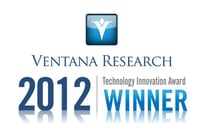At this year’s annual SAP user conference, SAPPHIRE, the technology giant showed advances in its cloud and in-memory computing efforts. It has completed the migration of its conventional application suite and portfolio of tools to operate on SAP HANA, its in-memory computing platform, and made improvements in its cloud computing environment, SAP HANA Enterprise Cloud. The last time I analyzed SAP HANA was when it won our firm’s 2012 Overall IT Technology Innovation Award. Now HANA has been...
Read More
Topics:
Big Data,
Predictive Analytics,
SAP,
Social Media,
Teradata,
Mobile Technology,
Operational Performance Management (OPM),
Business Analytics,
Business Collaboration,
Business Intelligence,
CIO,
Cloud Computing,
Governance, Risk & Compliance (GRC),
HP,
Business Performance Management (BPM),
CFO,
CMO,
Customer Performance Management (CPM),
Financial Performance Management (FPM),
Information Applications (IA),
Information Management (IM),
SAP EPM,
SAP HANA,
SAP Lumira,
SAPPHIRE,
Supply Chain Performance Management (SCPM),
Tagetik,
Workforce Performance Management (WPM)
The new CEO of Hewlett-Packard, Leo Apotheker, has unveiled his vision of the future in the consumer and enterprise markets. His announcement carried some suspense after interviews in which he said “HP has lost its soul” and added that he will “get rid of cynics” inside HP who try to undercut his mission. Now Leo has defined what his company calls Everybody On, which is described as “seamless, secure, context-aware experiences for a connected world.” He intends that HP will reposition itself in...
Read More
Topics:
Social Media,
Sustainability,
Operational Performance Management (OPM),
Analytics,
Business Analytics,
Business Collaboration,
Business Intelligence,
Business Mobility,
CIO,
Cloud Computing,
Collaboration,
Enterprise Software,
Governance, Risk & Compliance (GRC),
HP,
Information Technology,
Location Intelligence,
Mobility,
Operational Intelligence,
Business Performance Management (BPM),
Customer Performance Management (CPM),
Financial Performance Management (FPM),
Information Applications (IA),
Information Management (IM),
IT Performance Management (ITPM),
Sales Performance Management (SPM),
Supply Chain Performance Management (SCPM),
Workforce Performance Management (WPM)
No one has seemed to notice that in the last several months, Hewlett-Packard has quietly made changes to its participation in the enterprise software market; this will significantly change HP’s value for CIOs and IT organizations in regards to business intelligence (BI) technologies.
Read More
Topics:
Data Warehousing,
Operational Performance Management (OPM),
Analytics,
Business Intelligence,
Enterprise Software,
HP,
HP Neoview,
Information Applications (IA),
Information Management (IM),
IT Performance Management (ITPM)











